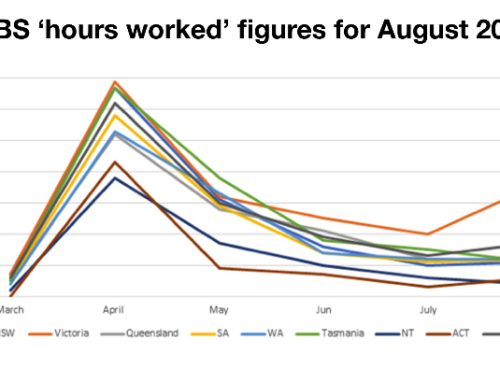Oliver D. Hart and Bengt R. Holmström were announced as the 2016 winners of the Nobel Memorial Prize in Economic Sciences, awarded each year since 1968, for their contributions to the field of contract theory. Contract theory informs the basis of our economy and everyday economic transactions, governing the deals that bind employers and workers, companies and customers.
The Royal Swedish Academy of Sciences, said when awarding the $1.2 million prize to Hart and Holmström, “Their analysis of optimal contractual arrangements lays an intellectual foundation for designing policies and institutions in many areas, from bankruptcy legislation to political constitutions.”
Holmström’s work has been instrumental in analysing work incentives, asset ownership and executive pay practice, while Hart’s work has been recently cited by public authorities in the deciding whether to outsource and privatise public services.
What is contract theory?
Contract theory is a subset of microeconomics that examines how economic actors construct contractual arrangements, given the actors have asymmetric access to information.
At the heart of contract theory and resulting economic models is the drive to find theoretical ways to motivate, or incentivise, actors to take appropriate actions that maximise, or optimise, both parties’ benefit (utility) of the transaction.
Hart and the problem of “incomplete contracts”
In a summary of Hart’s work, The Royal Swedish Academy of Sciences wrote, “His research provides us with theoretical tools for studying questions such as which kinds of companies should merge, the proper mix of debt and equity financing, and which institutions such as schools or prisons ought to be privately or publicly owned.”
Central to Dr Oliver Hart’s work is the idea of complete and incomplete contracts. In contract theory, a “complete contract” exhaustively specifies the legal consequences of every possible state of the world and contractual outcome, while an “incomplete contract” and Hart’s pioneering work during the 1980s on the subject investigates the incentive effects of parties’ inability to write complete contingent contracts.
Hart’s central thesis is that, in practice, contracts cannot specify what is to be done in every possible contingency. A consequence of incomplete contracts is referred to as the “hold-up problem” and refers to a situation where two parties may be able to work most efficiently by cooperating but don’t, fearing they may give the other party increased bargaining power, reducing their own profits. Hart and s co-authors have argued that this problem can be mitigated by choosing a suitable ownership structure.
This ‘suitable ownership structure’ can be applied to government decision-making when considering whether an asset should be privatised or services outsourced. According to Hart’s theory, the decision to privatise depends on the nature of non-contractible investments. For instance, the manager of some service facility could make an investment decision that improves service quality, or one that reduces costs at the expense of service quality. If that service is government-owned, there is little incentive for the manager to invest at all to decrease costs or improve quality of service because contractually, there isn’t scope for the manager to be rewarded for positive outcomes. However, if that service is privately owned, Hart’s 1997 article written with Andrei Shleifer and Robert Vishny, showed that incentives for cost reduction are typically too strong.
Therefore, privatisation decisions depend on the trade-off between cost reduction and quality, and whether a contract can incentivise the desired outcomes account for unexpected challenges.
Currently a professor at Harvard, Dr Hart has recently been called upon to explore the limits of contractual relationships as they relate to government services. The US Federal Government turned to Hart’s theory in recent tax cases to decide what tax benefits should be given to two companies, Black & Decker and Wells Fargo after they had ‘spun off’ some lines of business, finding that as the companies had retained control of decision making in the spin-offs, they could not simultaneously lay claim to the cost savings.
The recent decision by the US Federal Government to end its relationship with private prisons was also considered in Hart and co-authors’ work as an example of poorly incorporated outcome incentives in an “incomplete” contractual relationship.
Holmström and “informativeness”
Dr Bengt Holmström, currently a professor at the Massachusetts Institute of Technology, has focused more on employment contracts and the incentives in the relationship between employer (principal) and employee (agent). Holmström’s work in the 1970s investigated how a principal (a company’s shareholders) could optimally contract with an agent such as a CEO.
Holmström and Steven Shavell published studies in 1979 showing that an optimal contract links payment to outcomes of decisions taken by the agent (CEO). This “informativeness principle” has informed much academic economic work, but has not been fully incorporated into executive pay decisions. Many CEOs still earn bonuses and performance pay reflecting, for instance, increased company stock price not benchmarked against overall macroeconomic changes. That is to say, a large part of executive pay structures still take into account factors beyond the executive’s control.
In later work in the 1980s, Holmström analysed employees’ incentives to work hard at their current job and the relationship with current pay versus the promise of future earnings and career prospects. Holmström found that a company must reward current performance with higher future earnings, lest the employee switch employer in a competitive labour market, but this creates inefficiencies where career concerns and future earnings promise are so strong early on in an employee’s career that they work excessively hard for little immediate reward.
Holmström’s career-concerns model has been applied to other contexts. Where the principal (employer) wants to incentivise a certain outcome or work product from an employee (agent), more latitude needs to be given in the contract for outcomes that are not easily measured. Where contracts specify reward for enumerated tasks, those are disproportionately the tasks on which an employee will focus their time. However, if a salary model is used to internalise long-term career incentives into the contract rather than the immediate measurable outcomes, the principal is more likely to achieve their desired result.
Holmström and Paul Milgrom’s 1991 research extended the analysis to scenarios where employee’s job consists of many different tasks, some of which are difficult for the employer to monitor and reward. In the public sector, for instance, teacher pay agreements that focus heavily on student test scores may incentivise teaching to the test at the expense of other skills and areas of knowledge. Politicians can also be encouraged better serve constituents’ long-term needs if their job performance is framed in terms of a career, rather than focusing on short-term transactional results of recent decisions.






